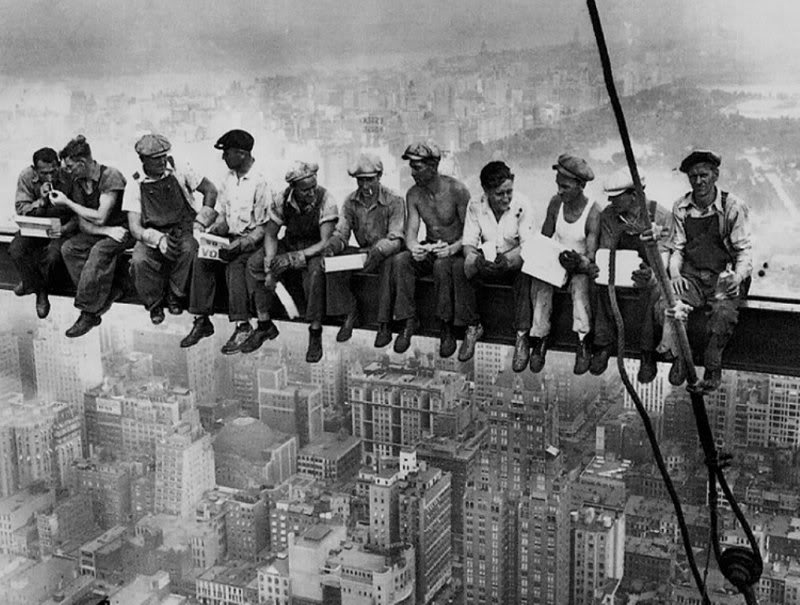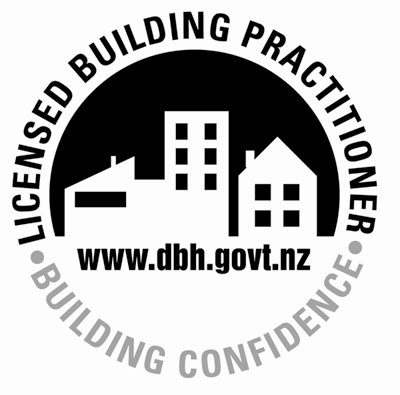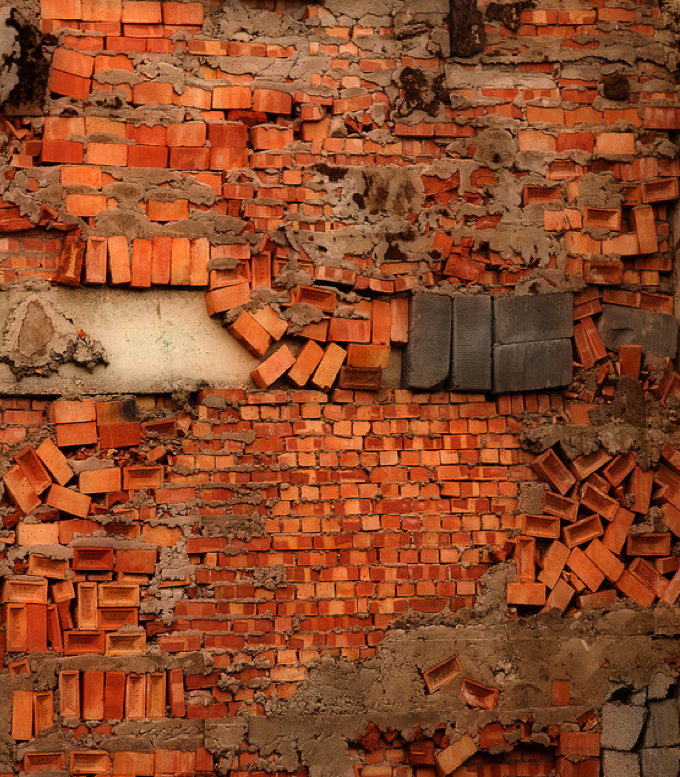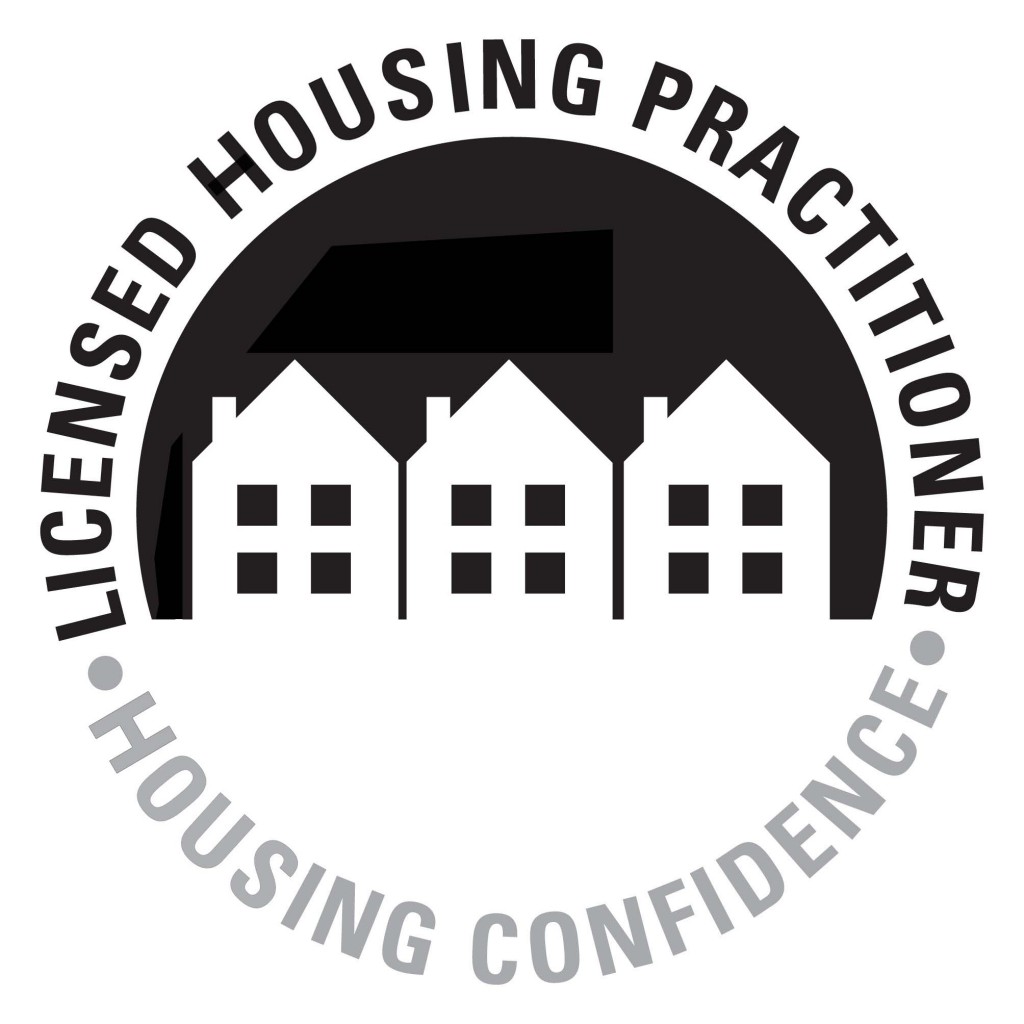On Thursday morning, 1st March, 2012, the New Zealand licensed building practitioner scheme comes into being. From that day forward, the only people allowed to build or design anything more than just a little bit complicated than a chicken shed, are people who have the initials LBP after their name. Anything that requires a Building Consent. Anything that is to be known as Restricted Building Work. You have been warned.

Well that’s a good thing isn’t it? We have to have workers who are capable of building things properly, don’t we? We’ve got a city or two to rebuild! One down south (already munted), one right here (overdue for a good munting), and one up north (leaking like a sieve). Probably a few more bits of work in between too… Surely we’re on the road to financial sanity at last!
If you’re a regular around these parts, you’ll be well aware of all this: we wrote about this way back in 2009 in a post warning of impending bureaucratic nightmare. A summary then: the Building Act was changed in 2004, to address issues raised by the leaky building crisis. After much canvasing of the construction industry, and much perusing of the Australians (especially those from Victoria), “we” (ie New Zealand – ie the DBH) decided to emulate our Victorian cousins and introduce a similar scheme of Licensed Building Practitioners. It has been delayed a few times already, due to an intense lack of interest from the people it was meant to regulate, but here we are, 8 years after the Building Act became law, and, by all accounts, we have got a bit of a minefield of bureaucracy coming up.

How shall I bore you? Let me count thy ways….
Let’s start with Design. Who is allowed to design a house in NZ?
It’s anyone, isn’t it? Protection of function of the architect was of course refused in 2005 Architects Act, as the principle is enshrined in our kiwi “Do it yourself” number 8 wire mentality, that anyone can design and build their own house without some joker from the government sticking his nose in. So, protection of function (ie design) of the architect was refused, although protection of title was allowed, in a botched sort-of way. So, the correct answer to “Who is allowed to design a house in NZ?” is: Anyone? Surely?

Wrong.
“If you are applying for building consent from 1 March 2012 your building design must be done by a licensed designer, a registered architect or a chartered professional engineer.â€
But it is a little more complicated than that. Licensed Building Practitioners can be registered in Design in one of 3 classes. Class One is the lowest class – so don’t get it muddled up with First Class. In the case of the LBP, it’s Third Class that is First Class. So: a basic class one Design can be done by someone registered as Design Class One. That’s your bog-standard, mass-produced, single-story, non-fancy type home. The sort of crap that Versatile buildings churn out. There are currently just 7 people registered as Design Class One in the Wellington region as of Sunday 26 Feb: 3 women, 4 men. Clearly not a popular choice: perhaps this is the zone for the unambitious.
Design Class Two is somewhere in the middle. That means a bigger, more complicated house, with a few fiddly bits. The sort of house that gushy people on TV prattle on about, in adverts for GJ Gardner, although their squeaky-voiced anti-architect presenter has been ditched for reasons unknown. Design Class Two registered people can also design Class One buildings too. There are 58 people currently registered in this category in Wellington. That’s still not a heck of a lot.
Design Class Three is at the top of the scale. Think of it like being a 3-star general, capable of planning any kind of war complex buildings. Curiously, there are only 13 people registered in Wellington under this category, with a few names that I recognise from Project Managers around town. These are the people who are now legally deemed capable of designing any complex building in the country. So, if that’s all, then where have all the Architectural Designers gone to then? When the figures were touted up a few years ago, apparently thousands and thousands of people said that they were designers in the building industry, dwarfing the architects, who were clearly just a small sub-section of the total. Have all the ADNZ members sold up and gone to Tauranga to corner the retirement market? Or have they all flocked to Christchurch to help draw up the rebuild? Are they on this list at all? And what about the Architects and Engineers? Where do they fit in? They’re obviously not on this list either, are they?

Nope: here’s the rub: Registered Architects and Chartered Professional Engineers will not appear on this register.
“Under section 219 (2) of the Building Act 2004, Registered Architects and Chartered Professional Engineers are treated as if they are licensed in the Design 3 class. They will not show on the Licensed Building Practitioner Register as they appear on the registers of their own registration schemes.”
To find a Registered Architect, visit the New Zealand Registered Architects Board – www.nzrab.org.nz
To find a Chartered Professional Engineer, visit the Institute of Professional Engineers New Zealand (IPENZ) – www.ipenz.org.nz
Architects and Engineers will therefore not show up on this LBP list. Although they’re “treated as if they are licensed”, they’re actually not allowed to be licensed as such, under clause 291 of the Building Act:
291 Automatic licensing of people registered under other enactments
(1) This section applies to a person who is registered, licensed, or otherwise recognised under any other enactment (for example, a registered architect), but does not apply at any time when that registration, licence, or other recognition is suspended or cancelled.
(2) An order made under section 285 may treat the person as if they were licensed in a class or classes specified in the order.
(3) A person who is treated as being licensed in a particular class or classes under subsection (2)…
may not apply under this Act to be licensed in another class that is substantially equivalent to the class of licensing in which he or she is treated as being licensed.
So, while the DBH sells the virtues of the use of the new LBP logo:
“The Licensed Building Practitioner logo is the key element of the Licensing Scheme. The Department of Building and Housing has strict guidelines about the reproduction and use of the logo. The display of the logo contributes to the public awareness of licensed building practitioners. It provides a quality mark, awareness, and trust through brand communication. The Licensed Building Practitioner logo (LBP logo) may only be used once permission is gained from the Registrar. Subject to approval, the logo may only be used by:
* Individual Licensed Building Practitioners…”

So, Architects and Engineers are forbidden from having the badge of “quality mark, awareness, and trust through brand” – you’re stiff out of luck at using that logo. Of course, if anyone illegally uses this logo here, they’ll get caught out too. It is the wrong colour. Ha! That’ll teach you!
While Engineers can use this logo:

Architects can use this logo:

…which, admittedly, no one knows what it means, as it has no words associated.
So they had really better join the club so that they can use this logo:

There’s a little bit of illogicality here, as Architects and Engineers are lumped together in a group of Design Class Three equivalents. Forgive me if I’m mistaken, but you wouldn’t get an Engineer to design your house, nor get an Architect to size your beams for the EarthQuake proofing…

So – that’s that for Design. There is also the curious question of those with the Site license – of which there are again 3 Classes. Site Class One, the lowest level, has 100 people registered – and not a single one of them is a woman, by the looks of it. They’re all Bruce and Wayne, David, Peter, and Gary. Bloke’s names. And look, I think that Architects and Engineers are automatically deemed to be Site Class 1, 2, or 3, as well. But I might be wrong there. Look: it’s complicated right?
Site Class Two has 194 registered there (about 5 women), and Site Class Three has just 16 men on it, for the whole of Wellington, who are allowed to be in charge of a really complex project on site. I’m a little concerned by that – there should be more than just 16 blokes in the whole of Wellington who are allowed to be in charge of big building projects – some of the really good builders that I know are only classified as Site Two, so there will be a few nasty moments coming up there. Will complex sites be closed down if there is not a Site Class Three person on site?

Are you following all this? Do you even care? Do I ? I dunno. It’s exhausting. There are about another 14 categories of tradespeople, such as specialists in Foundations, Carpentry, Brick/Blocklaying, Roofing, and External Plastering, etc, which are probably more self-explanatory, as they are then further divided into more sub-categories: Metal Tile Roof, Clay and Concrete Tile, Membrane Roof, Liquid applied Roof, Torch-on Roof, etc. All clear?

Last bit here: the DBH says: “From 1 March 2012 changes to the Building Act 2004 mean that building work (including design work) that relates to either the structure (load-bearing walls; foundations etc) or moisture penetration (roofs; cladding etc) of homes including small to medium sized apartments will be classified as ‘Restricted Building Work’ (RBW).†and then goes on to say: “From 1 March 2012 critical building work that is known as Restricted Building Work, must be done by an LBP (Licensed Building Practitioner).â€
So that’s it then. We’re going this week from a situation where any person, anywhere in the country, can design anything they damn well please, and get whoever they can rustle up to put it all together and call it a building – to a situation where only the registered can design it, only the registered can be in charge of it on site, and only the most competently registered souls can actually build it. That’s a pretty big turnaround in a week. Not only are there penalties for you if you get a non-licensed designer to design it, or a non-licensed builder to build it, the builder themselves could get in trouble as well if they are not licensed, with fines of $10,000 or $20,000 or more being noted as possible, as already happens in Australia. Coupled with that, the person in that exhalted position of being the Licensed person will have to personally sign their name on the paperwork associated with that building, for the rest of time. If something goes wrong, your name is on the line, literally, and your arse is toast, metaphorically.
Its all a good move though, surely. As long as all our talented builders don’t just go off to Australia, fed up with the bureaucracy left behind….

Postscript – new logo proposed by a little Fish called Solid:





I can walk into site class 3 no problem – except for it costing about $700 with an annual fee for remaining registered. And for what?
Not one client has mentioned it to me yet, they don’t use it in Aussie and I flat out won’t touch any project with monolithic cladding or Titanboard so I’m not exposed to any of that leaky homes debacle.
I agree with the licensing system in principle but there are some silly ideas in it – exceptions in part for people building their own homes being one.
Obviously this will put building costs up which is not going to be welcomed by the homeowners trying to make a dollar last the week so perhaps there will be less work?
The real news on this scheme to me is how much it is being ignored by tradespeople – I don’t know what the figures are exactly as a proportion of how many builders and architects are out there but I hear that it ain’t much..has anyone got the numbers?
60 – there is no exception for people building their own home – at present, by law, they are forbidden to do any important work – ie Restricted Building Work – as from Tghursday. That part is contained in an Amendment to the Building Act that is still going through the parliamentary system, and so is not, as yet, anywhere near being law.
You say you will have no problem getting into site class 3 no problem – although, I am surprised that some of the very good builders I know ending up in only class 2, not getting into class 3. Presumably that was as much a surprise for them as it is for me. But actually, the Site bit seems to be not quite so important as the Carpentry license bit, which you have to have as well. My guess though is that there is a massive amount of non-registration by builders.
Regarding architects, I think I heard that there are over 1000 registered architects nationwide. Not sure how many are unregistered – presumably just recent graduates?
Regarding this – newspaper today reports that:
“Home DIY experts are being warned to think twice before jumping into home renovations when new building rules come into effect. From Thursday changes to the Building Act will come into force with the introduction of a restricted building work category. It means any structural design and work such as load-bearing walls and foundations, as well as weathertightness work such as roofing, must be undertaken by a licensed building practitioner.
The range of specialised licences include roofers, brick and blocklayers and carpenters. Professional engineers, architects, plumbers and gasfitters are treated as licensed practitioners and can carry out some restricted building work.
Under the law change it will be an offence to knowingly engage an unlicensed person to do the work. Anyone convicted could be fined up to $20,000. The change covers both homes and small to medium sized apartment complexes.
Department of Building and Housing deputy chief executive Alison Geddes said people could continue to do restricted building work on their own home, but would have to have their work supervised by a licensed practitioner. The Government was considering an exemption for DIY builders, which was expected to have a second reading later this year.
Master builders chief executive Warwick Quinn said he was supportive of the changes. It would largely put a stop to “cowboy” builders and give some reassurance to homeowners, he said.
“It will stop people coming out of the woodwork when things are busy and saying `hey, use me’.”
Kiwis doing DIY work was part of the country’s culture, but he advised people to be careful and communicate clearly with their local council after the amendment was passed into law.”
As one of our eagle-eyed Fish readers has noted:
“Hi Fish,
The latest lot of information from DBH and advice from councils is that the restricted work only applies to only residential work. This was done to “simplify the building category levels” but instead takes all the teeth out of the scheme and simply makes designing and building a house harder and more expensive. Anyone can now design anything (even mixed use commercial / residential) as long as its not solely housing.
I thought I would suggest a new logo for them to more accurately reflect what the scheme now represents and with result in.
cheers, Solid”
We’ve posted up Solid’s proposed new logo…. …which looks a lot better than the official one, and, is a lot more truthfull..!
“Curiouser and curiouser,” said the little white rabbit as he disappeared down the hole. “The government has just passed an amendment (no. 3) to the Building Act whereby all the work up above, to stop cowboy builders, has been undone. Now anyone can build their own home again – including family and close friends.”
“Hmmm,” thought Alice, “if I had a government Department as dysfunctional as that, I think I would disestablish them as well…”
“Zzzzzzz” said the Dormouse, as he dozed off in the site shed, “nothing to worry about then. May as well go back to sleep and not get my LBP certification after all… zzzzzzzz..z.z.z.z.z.”